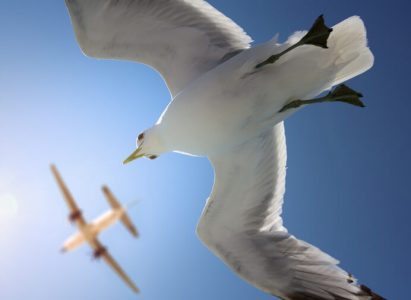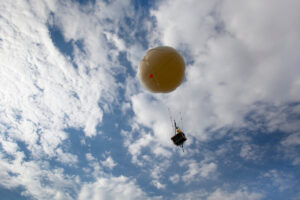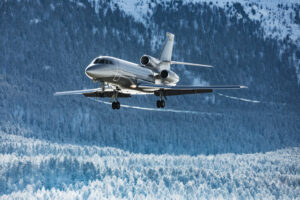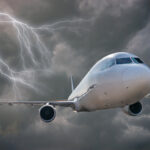In Aviation Airspace, Birds and Aircraft Don’t Mix
Aviation airspace is a busy place where planes, helicopters, drones, sky divers, and birds share the same air. Unfortunately, not everything that flies is under positive control. This has led to an increase in bird strikes, which rose from 1800 in 1990 to 16,000 in 2018, due to population growth, more aircraft flying and faster, quieter planes. Low-flying helicopters also suffer big losses.
As a flight instructor, I’ll admit that I don’t remember many of my students from my early days. But there was one that stood out – the one who survived a bird strike. A feathered fiend crashed through the windshield and ended up lodged in the tail of the Cessna. Luckily, the student landed the plane safely, but not without being covered in blood and feathers, and understandably traumatized.
Fast forward to my time as a pilot for US Airways, and the hugely publicized story of Captain Sullenberger and his emergency landing on the Hudson River due to a bird strike. It goes to show that this is a real and pressing issue that needs addressing.
Unfortunately, helicopters are particularly susceptible to bird strikes due to their use of low-altitude corridors and slow speeds. So, the experts got together at the Vertical Aviation Safety Team conference to come up with ways to reduce the risk. They found that birds can detect aircraft approaching and try to avoid them, but they need at least 92 feet and 0.8 seconds to react. This means aircraft can’t travel faster than 65 knots to avoid collisions, which is unlikely with modern planes.
What Can Pilots Do to Help Mitigate Bird Strikes?
Here are some mitigation strategies that pilots can use to prevent bird strikes while flying:
Pre-Flight
- Review the latest bird activity reports and update flight plans accordingly. Consult with local air traffic control for the most current reports and monitor the situation before takeoff.
- Check the aircraft’s windscreen and landing lights for cracks or other damage that could diminish visibility during a bird strike incident.
During Flight
- Remain vigilant by keeping an eye out for birds and other wildlife near the flight path.
- Use all available equipment such as weather radar, GPS, and visual aids like binoculars to identify and avoid flocks of birds.
- When approaching areas of high risk, reduce airspeed or climb to a higher altitude to increase visibility and reduce the chance of collisions.
- Maintain communication with air traffic control for real-time updates on weather and bird activity in the flight path.
Post-Flight
- Inspect the aircraft’s exterior for signs of damage following a flight. If there are indications of a bird strike, report it to the airport authorities and the aircraft maintenance team immediately.
These mitigation strategies can help pilots minimize the risk of bird strikes during flight operations. Bear in mind that various types of aircraft and the time of day may also be a factor in determining the best course of action in preventing bird strikes. It is important for pilots to remain prepared at all times to effectively respond to unforeseen circumstances and ensure a successful and safe flight.
It’s all about finding ways to coexist in the sky, and smart people with smart technology are working hard to make it happen. Who knows, maybe we’ll even see some after-market bird avoidance systems crop up soon. Because let’s face it, no one wants to come face-to-beak with a bird while flying!










